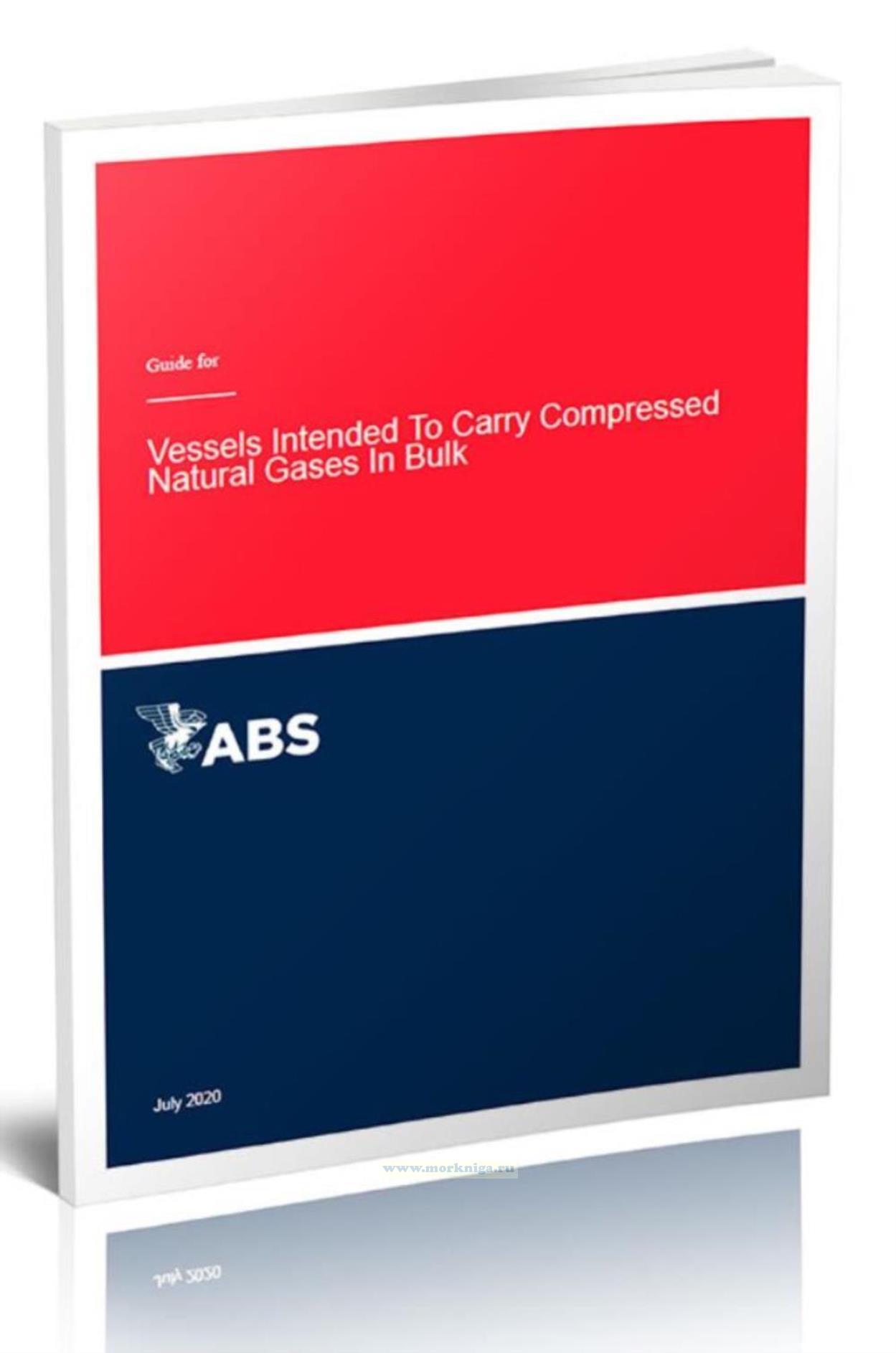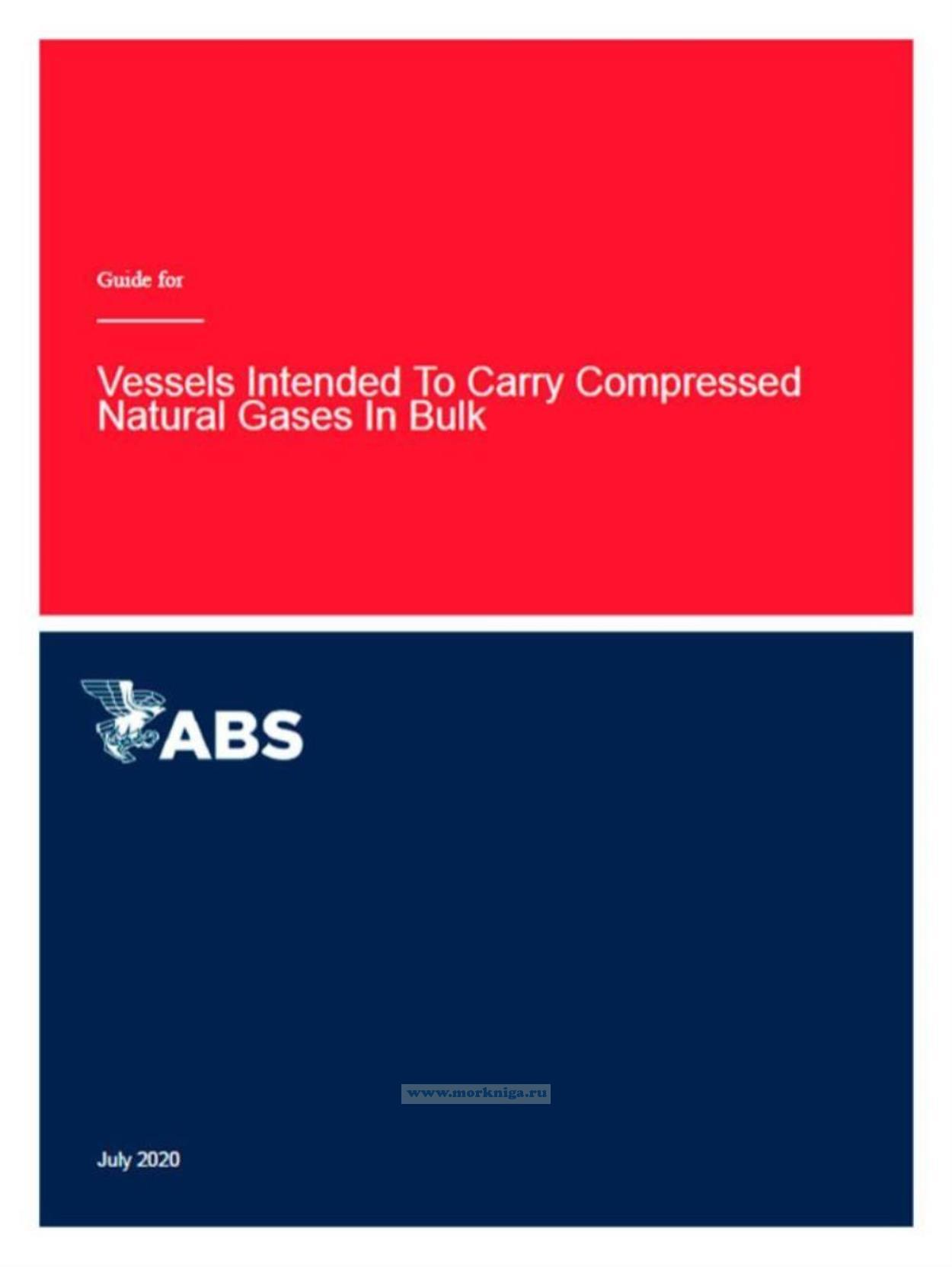Guide for Vessels Intended To Carry Compressed Natural Gases In Bulk/Руководство по транспортировке морем сжиженного природного газа
Книга на английском языке.
This Guide provides requirements for design, construction and periodic surveys required for maintenance of classification that would be applicable to CNG carriers, where it is intended to obtain ABS class for the vessels. These requirements may also serve to satisfy Port State and Flag State Regulations as they develop. As these projects are still at the concept stage and various scenarios are being considered at this time, the objective will be to establish an overall philosophy or approach to provide a framework of reference material and cite precedence, where applicable, as to what methodologies followed by designers in similar projects have proven successful in the past.
Contents
Chapter 1 Introduction
Section 1 General
Section 2 Definitions
Section 3 Abbreviations and References
Chapter 2 Risk Assessment and Special Studies
Section 1 General
Section 2 Requirements
Section 3 Acceptance Criteria
Section 4 Limit State Design Interaction
Chapter 3 Ship Survival Capability and Location of Cargo Tanks
Section 1 General
Section 2 Freeboard and Intact Stability
Section 3 Shipside Discharges Below the Freeboard Deck
Section 4 Conditions of Loading
Section 5 Damage Assumptions for Stability Assessment
Section 6 Location of Cargo Tanks
Section 7 Flooding Assumptions
Section 8 Standard of Damage
Section 9 Survival Requirements
Appendix 1 Computer Software for Onboard Stability Calculations
Chapter 4 Ship Arrangements
Section 1 Segregation of the Cargo Area
Section 2 Accommodations, Service and Machinery Spaces and Control Stations
Section 3 Cargo Pump Room and Cargo Compressor Rooms
Section 4 Cargo Control Rooms
Section 5 Access to Spaces in the Cargo Area
Section 6 Air-locks
Section 7 Bilge, Ballast and Fuel Oil Arrangements
Section 8 Athwartships, Bow, Stern and Turret (Internal/External) Loading and Unloading Arrangements
Section 9 Hull Structure
Section 10 Access
Section 11 Emergency Escape and Safe Refuge
Chapter 5 Cargo Containment
Section 1 General
Section 2 Definitions
Section 3 Design Loads
Section 4 Structural Analyses
Section 5 Allowable Stresses and Corrosion Allowances
Section 6 Installation of Cargo Tanks and Supports
Section 7 Thermal Protection
Section 8 Insulation
Section 9 Insulation Materials
Section 10 Cargo Tank Fabrication and Testing
Section 11 Stress Relieving for Cargo Tanks
Section 12 Guidance Formulae for Acceleration Components
Section 13 Stress Categories
Appendix 1 Probabilistic Limit State Design Approach
Chapter 6 Process Pressure Vessels and Liquid, Vapor and Pressure Piping Systems
Section 1 General
Section 2 Cargo and Process Piping
Section 3 Piping Fabrication and Joining Details
Section 4 Testing of Piping
Section 5 Cargo System Valving Requirements
Section 6 Ship's Cargo Hoses
Chapter 7 Materials of Construction for Cargo Tanks
Section 1 General Material Requirements
Section 2 Special Processing and Testing Requirements
Section 3 Tests and Test Data
Section 4 General Requirements on Testing and Inspection
Section 5 Qualification and Production Weld Testing
Chapter 8 Cargo Pressure/Temperature Control
Section 1 General
Section 2 Refrigeration Systems
Chapter 9 Cargo Tank, Cargo Handling, Cargo Process and Piping Overprotection and Vent System
Section 1 General
Section 2 Pressure Relief Systems
Section 3 Pressure/Vacuum Protection for Cargo Hold
Section 4 Size of Valves
Chapter 10 Environmental Control
Section 1 Environmental Control within Cargo Tanks and Cargo Piping Systems
Section 2 Environmental Control within the Hold Spaces for Cargo Tanks
Section 3 Inerting
Section 4 Inert Gas Production Onboard
Chapter 11 Electrical Installations
Section 1 General
Section 2 Types of Equipment
Chapter 12 Fire Protection and Fire Extinction
Section 1 Fire Safety Requirements
Section 2 Fire Water Main Equipment
Section 3 Water Spray System
Section 4 Dry Chemical Powder Fire-extinguishing Systems
Section 5 Cargo Handling System and Equipment
Section 6 Firemen’s Outfits
Chapter 13 Mechanical Ventilation in the Cargo Area
Section 1 Spaces Required to be Entered During Normal Cargo Handling Operations
Section 2 Spaces not Normally Entered
Chapter 14 Instrumentation (Gauging, Gas Detection and Cargo Handling Controls)
Section 1 General
Section 2 Level Indicators for Cargo Tanks (If Applicable)
Section 3 Overflow Control (If Applicable)
Section 4 Pressure Gauges
Section 5 Temperature-indicating Devices
Section 6 Gas Detection Requirements
Chapter 15 Use of Cargo as Fuel
Section 1 General
Chapter 16 Operating Requirements
Section 1 Cargo Information
Section 2 Personnel Training
Section 3 Entry into Spaces
Section 4 Carriage of Cargo at Low Temperature
Section 5 Protective Equipment
Section 6 Systems and Controls
Section 7 Cargo Transfer Operations
Chapter 17 Surveys
Section 1 Surveys During Construction
Section 2 Surveys After Construction and Maintenance of Class (2017)
Section 3 Risk-based Surveys for Maintenance of Class

